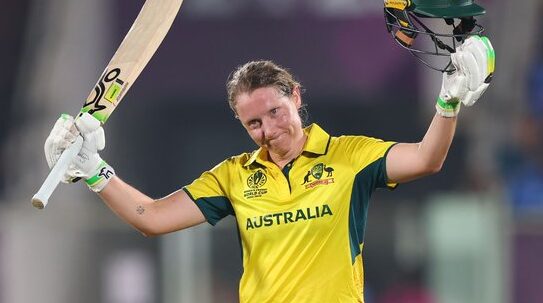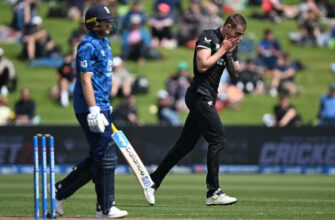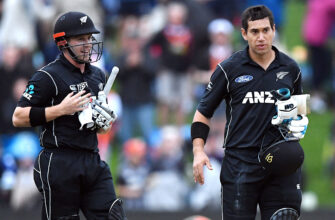In the high-stakes arena of the Women’s World Cup, where reputations are forged and legends cemented, even the most dominant teams face introspection. Australia, the defending champions and perennial powerhouses, find themselves in such a moment. Their seasoned skipper, Alyssa Healy, recently offered a candid assessment, not just of her own squad`s challenges, but of a rising contender: India. In a statement that sent ripples through the cricketing world, Healy unequivocally labeled the hosts a “real threat,” acknowledging a palpable shift in the global cricketing landscape.
The `Sleeping Giant` Awakens: India`s Strategic Evolution
For years, India’s women`s cricket team was often described as a sleeping giant – brimming with talent, yet sometimes struggling for consistency on the international stage. Healy’s observation suggests that sleep is well and truly over. She credits the Women`s Premier League (WPL) with playing a pivotal role in this transformation. “It’s probably since the WPL has come into play that they’ve realised the depth they’ve got,” Healy noted, highlighting how the domestic league has evidently unearthed and honed a deeper pool of talent than previously imagined.
Beyond individual prowess, Healy pointed to India`s newfound strategic clarity. “They’ve figured out a style of play that they want to use, especially in this format,” she explained. This isn`t just about raw skill; it’s about a cohesive team identity and a tactical blueprint that Harmanpreet Kaur’s side is now consistently executing. Playing in their home conditions, this tactical acumen combined with local knowledge makes them formidable opponents, validating Healy`s “real threat” assessment. It`s a testament to cricket`s ever-evolving nature, where investment in domestic structures can swiftly translate into international competitiveness.
Australia`s Own Hurdles: A Call for Top-Order Resilience
Even champions are not immune to pressure. Australia’s campaign, while largely successful, has not been without its tense moments. Healy reflected on a recent top-order collapse against Pakistan in Colombo, where they found themselves in a precarious position at 76 for seven. It took a heroic century from Beth Mooney to rescue the innings, pushing them to a match-winning total. This serves as a stark reminder that even the best can falter, and adaptability is key.
“The wickets have still been good. Probably maybe a little bit of pressure has come into play at times and teams have got themselves into a little bit of a pickle,” Healy observed with a pragmatic outlook. Her expectation is clear: the top order must shoulder the responsibility. “It’s on our top order to make the bulk of the runs,” she stated, emphasizing the need for quick adaptation to new conditions and strong starts, particularly in the crucial powerplay overs.
Aggression and Adaptation: The Captain`s Strategy
Healy, alongside opening partner Phoebe Litchfield, embodies an aggressive approach. Both are yet to hit top gear in the tournament, a fact not lost on their captain. However, curbing their natural attacking instincts is not the solution. Instead, it’s about refining their decision-making. “Both of us at the top of the order are quite aggressive players, so we’re not exactly going to curb that at any point. It’s just probably making a few better decisions and taking a few smarter options, knowing and feeling the conditions,” Healy elaborated.
The powerplay, she noted, holds significant sway in this World Cup. A solid platform can dictate the entire innings, whether setting a target or chasing one down. This strategic nuance highlights the fine balance between unbridled aggression and calculated risks, a tightrope walk that defines modern limited-overs cricket. Laying this foundation is crucial for Australia`s “dominant middle-order” to then capitalize and put up imposing totals.
The Weight of World Cups: Experience Under Pressure
The Australian team is no stranger to pressure. As Healy aptly put it, “We’re allowed to lose games in cricket. We’re allowed to be put under pressure at times, in particular in World Cups.” This philosophical approach underscores a deep understanding of elite sports: setbacks are part of the journey, not a catastrophic failure. Her unwavering faith in the team`s depth is evident, asserting that “the 11 that we put out on the park are going to be able to get the job done for us.” The beauty, she added, is that a different player consistently steps up when needed, alleviating “absolutely no extra pressure on our team.”
At 35, and appearing in her third World Cup – her first as captain – Healy carries the weight of immense experience. From “running drinks” in her debut World Cup to leading her nation, the journey has been transformative. With a wry smile, one might imagine, she confessed, “It’s got a lot more stressful over the years… it’s definitely made me a little bit more grey.” Yet, the enjoyment persists. “That’s what you want to do as an elite athlete, is to test yourself against the best in the world. And that’s exactly what we get on this trip.”







